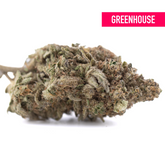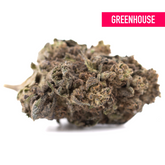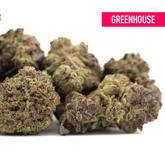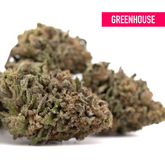Terpene Profiles: How Indoor vs Outdoor Growing Affects THCA Flower Aroma and Flavor

The world of cannabis has evolved dramatically, with consumers becoming increasingly sophisticated about the nuances that define their favorite strains. At the heart of this evolution lies the complex science of THCA terpenes – the aromatic compounds that give cannabis its distinctive flavors, aromas, and therapeutic properties. Understanding how cultivation environments affect these delicate compounds is crucial for both growers and consumers seeking the perfect cannabis flavor profiles.
Whether you're exploring premium THCA indoor flower or examining the unique characteristics of greenhouse THCA flower, the cultivation environment plays a pivotal role in shaping the final THCA aroma and flavor experience. This comprehensive guide explores how indoor versus outdoor growing conditions influence terpene development, preservation, and expression in THCA flower.
Understanding Terpene Science: The Foundation of Cannabis Flavor
What Are Terpenes?
Terpenes are organic compounds found throughout nature, responsible for the distinctive aromas and flavors in everything from pine trees to citrus fruits. In cannabis, these aromatic cannabis compounds serve multiple purposes: they attract beneficial insects, repel pests, and create the complex flavor profiles that define different strains. More than 200 different terpenes have been identified in cannabis, with each strain containing a unique combination that creates its signature cannabis taste.
The relationship between terpenes and cannabinoids like THCA creates what scientists call the "entourage effect," where these compounds work synergistically to enhance the overall experience. This interaction makes terpene analysis crucial for understanding not just flavor, but also the potential therapeutic benefits of different strains.
The Chemistry Behind Terpene Production
Terpene production in cannabis occurs in specialized structures called trichomes – the tiny, crystal-like glands that cover the surface of mature flowers. These trichomes produce terpenes as secondary metabolites, with production influenced by genetic factors, environmental conditions, and plant stress responses. The timing and intensity of terpene production can vary significantly between indoor and outdoor cultivation environments.
During peak flowering, trichome density and terpene concentration reach their maximum levels. However, these compounds are highly volatile and sensitive to environmental factors such as temperature, humidity, light exposure, and air circulation. This sensitivity explains why terpene preservation becomes such a critical factor in maintaining the quality of THCA strain flavors from harvest through consumption.
Terpene Volatility and Preservation Challenges
One of the most significant challenges in cannabis cultivation and processing is maintaining terpene integrity. These compounds begin to degrade immediately after harvest, with some terpenes being more volatile than others. Light exposure, heat, and oxygen all contribute to terpene degradation, making proper handling and storage essential for preserving the full THCA aroma profile.
Indoor cultivation environments offer greater control over these degradation factors, allowing growers to optimize conditions for maximum terpene retention. Conversely, outdoor plants must contend with natural environmental fluctuations that can both stress plants into higher terpene production and simultaneously threaten terpene stability.
Environmental Influences: How Growing Conditions Shape Terpene Development
Light Spectrum and Intensity Effects
Light plays a fundamental role in terpene biosynthesis, with different wavelengths triggering various metabolic pathways. Indoor growers using LED technology can precisely control light spectrums to encourage specific terpene production. Blue light (400-500nm) tends to promote the production of certain monoterpenes, while red light (600-700nm) influences sesquiterpene development.
Indoor THCA flower benefits from consistent, optimized lighting schedules that can be adjusted throughout the flowering cycle to maximize terpene expression. This controlled environment allows for the development of more consistent cannabis flavor profiles compared to outdoor plants, which must adapt to varying daylight conditions and seasonal changes.
Outdoor plants, including those grown in greenhouse environments, receive full-spectrum sunlight that can trigger broader terpene expression. However, intense UV radiation can also degrade certain terpenes during the growing process, creating a delicate balance between stimulation and preservation.
Temperature Control and Terpene Stability
Temperature regulation represents one of the most critical factors in terpene development and preservation. Most terpenes are highly sensitive to heat, with optimal production occurring in temperature ranges between 65-75°F (18-24°C). Temperatures above 80°F (27°C) can begin to degrade certain terpenes, while cooler temperatures may slow production.
Indoor cultivation provides superior temperature control, allowing growers to maintain optimal conditions throughout the entire flowering cycle. This consistency contributes to more predictable THCA strain flavors and helps preserve delicate terpene compounds that might be lost in fluctuating outdoor conditions.
Outdoor and greenhouse operations face greater temperature challenges, particularly during heat waves or unexpected weather changes. However, some growers argue that moderate temperature stress can actually enhance terpene production as plants respond to environmental challenges by increasing their defensive compound output.
Humidity Management and Terpene Expression
Humidity levels significantly impact both terpene production and preservation. Optimal relative humidity for flowering cannabis typically ranges from 40-50%, with higher levels increasing the risk of mold and lower levels potentially stressing plants and reducing terpene output.
Indoor facilities excel at humidity control, using sophisticated HVAC systems to maintain ideal conditions. This control helps preserve aromatic cannabis compounds throughout the growing cycle and into the drying and curing phases. The ability to rapidly adjust humidity levels also allows indoor growers to implement specialized techniques for enhancing terpene expression during critical flowering periods.
Greenhouse and outdoor operations must work with natural humidity fluctuations, which can be both a challenge and an opportunity. Some of the most complex cannabis flavor profiles emerge from plants that experience controlled stress from moderate humidity variations, though extreme fluctuations can be detrimental to terpene quality.
Common Terpene Profiles: Understanding the Aromatic Landscape
Myrcene: The Dominant Cannabis Terpene
Myrcene is the most abundant terpene in most cannabis strains, characterized by its earthy, musky aroma with hints of cloves and herbal notes. This terpene is particularly sensitive to environmental conditions, making it an excellent indicator of cultivation quality and terpene preservation practices.
In indoor environments, myrcene production tends to be more consistent and concentrated, contributing to the distinctive cannabis taste profile of controlled-environment flower. The ability to maintain optimal temperatures and humidity levels helps preserve myrcene content throughout the growing cycle, resulting in more potent aromatic expressions.
Outdoor and greenhouse-grown plants often develop different myrcene profiles due to environmental stressors and natural light cycles. While concentrations may vary, some outdoor strains develop unique myrcene expressions that reflect their terroir – the environmental factors that influence plant development, similar to wine grapes.
Limonene: Citrus Complexity in Cannabis
Limonene brings bright, citrusy notes to THCA strain flavors, ranging from lemon and orange to lime and grapefruit. This terpene is particularly responsive to light exposure and temperature fluctuations, making cultivation environment crucial for its development and retention.
Indoor THCA flower often exhibits more pronounced limonene characteristics due to controlled lighting conditions that optimize its biosynthesis. The ability to maintain consistent temperatures also helps preserve this volatile terpene, which can rapidly degrade under stress conditions.
Greenhouse cultivation can produce exceptional limonene profiles by combining controlled environments with natural sunlight exposure. This hybrid approach often yields THCA aroma profiles that combine the intensity of indoor cultivation with the complexity that comes from natural environmental influences.
Pinene: Forest Freshness and Clarity
Pinene contributes the fresh, pine-like aromas reminiscent of coniferous forests and brings alertness-promoting properties to cannabis strains. This terpene exists in two forms – alpha-pinene (pine, rosemary) and beta-pinene (hops, parsley) – each contributing different aromatic nuances to the overall profile.
The production of pinene is significantly influenced by air circulation and atmospheric conditions. Indoor facilities with sophisticated ventilation systems can optimize pinene development while preventing its degradation through stagnant air conditions. This control contributes to more consistent aromatic cannabis compounds profiles in indoor-grown flower.
Outdoor plants naturally benefit from constant air movement, which can enhance pinene production as part of the plant's natural defense mechanisms. However, extreme weather conditions and air pollution can negatively impact pinene retention, making location selection crucial for outdoor cultivation focused on terpene quality.
Caryophyllene: Spice and Complexity
Beta-caryophyllene adds spicy, peppery notes to cannabis and is unique among terpenes for its ability to interact with cannabinoid receptors. This terpene is less volatile than many others, making it more stable across different cultivation environments.
Indoor cultivation can optimize caryophyllene production through controlled stress techniques and environmental manipulation. The precise control available in indoor facilities allows growers to enhance caryophyllene expression without risking plant health or other terpene degradation.
Outdoor and greenhouse environments often naturally promote caryophyllene production through environmental stressors that trigger the plant's defensive responses. This can result in complex, spicy cannabis flavor profiles that reflect the plant's adaptation to its growing environment.
Preservation Methods: Maintaining Terpene Integrity Through Cultivation
Harvesting Techniques for Maximum Retention
The timing and method of harvest significantly impact final terpene content and quality. Terpene analysis reveals that trichome development and terpene concentration peak at specific times during the flowering cycle, typically when trichomes transition from clear to milky appearance.
Indoor growers can precisely time harvests based on environmental conditions and trichome development, often harvesting during cooler periods to minimize terpene loss. The controlled environment allows for more accurate prediction of optimal harvest windows, contributing to superior terpene preservation.
Outdoor cultivators must balance optimal terpene development with weather conditions and other environmental factors. While this can create timing challenges, some outdoor growers report that natural light cycles and environmental stressors can push plants to produce exceptional terpene profiles just before harvest.
Drying and Curing for Terpene Enhancement
Post-harvest processing critically affects final terpene profiles. Proper drying removes moisture while preserving terpenes, typically requiring temperatures between 60-70°F with humidity levels around 45-55%. Curing then allows for continued terpene development and stabilization over several weeks.
Indoor facilities often maintain better control over drying and curing environments, using climate-controlled rooms that optimize aromatic cannabis compounds preservation. This control helps maintain the THCA aroma characteristics that define premium indoor flower.
Greenhouse and outdoor operations may face challenges in controlling post-harvest conditions, but innovative techniques such as field curing and natural aging can develop unique terpene profiles not achievable in controlled environments. These methods can enhance cannabis taste complexity through controlled environmental exposure.
Storage and Handling Best Practices
Proper storage maintains terpene integrity from cure completion through consumption. Light, heat, and oxygen exposure all degrade terpenes, making proper packaging and storage essential for maintaining THCA strain flavors.
Professional indoor operations typically implement comprehensive storage protocols that protect terpenes through every stage of the supply chain. This attention to detail helps preserve the cannabis flavor profiles that define high-quality indoor flower.
Outdoor and greenhouse operators may face additional challenges in maintaining consistent storage conditions, particularly for large-scale operations. However, innovative packaging solutions and climate-controlled storage facilities can help maintain terpene quality comparable to indoor-grown products.
Taste Testing Comparison: Sensory Evaluation Techniques
Professional Terpene Analysis Methods
Professional terpene analysis utilizes sophisticated laboratory equipment such as gas chromatography-mass spectrometry (GC-MS) to identify and quantify specific terpenes in cannabis samples. These analytical methods provide objective data about terpene profiles and can compare indoor versus outdoor growing effects on terpene development.
Laboratory analysis reveals that indoor THCA flower often exhibits more consistent terpene profiles with higher concentrations of volatile compounds. The controlled environment appears to optimize conditions for terpene biosynthesis while minimizing degradation factors.
Comparative analysis of greenhouse THCA flower shows interesting patterns where some terpenes may be more concentrated than indoor alternatives, while others may be reduced. This variability reflects the complex interaction between controlled and natural environmental factors.
Sensory Evaluation Protocols
Professional sensory evaluation follows structured protocols that assess aroma intensity, flavor complexity, and overall terpene expression. Trained evaluators use standardized techniques to minimize bias and ensure consistent assessments across different samples and cultivation methods.
Aroma evaluation typically begins with initial impression upon opening storage containers, followed by more detailed assessment after gentle agitation to release volatile compounds. THCA aroma characteristics are evaluated for intensity, complexity, and specific terpene notes that define strain identity.
Flavor assessment through vaporization allows for more detailed evaluation of cannabis taste profiles without combustion interference. Different vaporization temperatures can highlight specific terpene ranges, providing comprehensive flavor mapping of different cultivation methods.
Consumer Preference Patterns
Market research reveals interesting patterns in consumer preferences for different terpene profiles and cultivation methods. Many consumers associate indoor cultivation with consistency and potency, while others prefer the complexity and uniqueness often found in outdoor-grown products.
Cannabis flavor profiles preferences vary significantly among consumer segments, with some favoring the pronounced, consistent flavors often found in indoor flower, while others appreciate the subtle complexity and terroir effects of outdoor cultivation.
Understanding these preferences helps both growers and retailers optimize their offerings to meet market demand. The diversity of THCA strain flavors available across different cultivation methods provides options for every consumer preference and use case.
Strain-Specific Differences: Genetics Meets Environment
Indica vs Sativa Terpene Expression
Different cannabis subspecies exhibit distinct patterns of terpene expression that interact uniquely with cultivation environments. Indica-dominant strains often produce higher concentrations of myrcene and other sedating terpenes, while sativa-dominant varieties may emphasize limonene and pinene for more energizing profiles.
Indoor cultivation can enhance these genetic tendencies by optimizing environmental conditions for specific terpene production pathways. The controlled environment allows growers to fine-tune conditions to maximize desired aromatic cannabis compounds while minimizing unwanted characteristics.
Outdoor cultivation may produce more balanced terpene profiles as plants adapt to natural environmental pressures. This adaptation can result in unique expressions of THCA strain flavors that reflect both genetic potential and environmental influence.
Hybrid Strain Complexity
Hybrid strains present unique opportunities and challenges for terpene development across different cultivation environments. The complex genetics of modern hybrids can produce unpredictable terpene expressions that vary significantly between indoor and outdoor growing conditions.
Indoor THCA flower from hybrid strains often exhibits more predictable terpene profiles due to environmental consistency. This predictability allows for better planning and optimization of terpene preservation techniques throughout the cultivation cycle.
Greenhouse and outdoor hybrid cultivation can produce surprising terpene combinations as environmental stressors trigger different genetic expressions. These unique profiles contribute to the diversity of cannabis flavor profiles available in the market and provide opportunities for discovering new aromatic combinations.
Landrace and Heirloom Varieties
Traditional landrace and heirloom varieties have evolved in specific geographic regions over thousands of years, developing unique terpene profiles adapted to their native environments. These genetics often respond differently to modern cultivation environments than contemporary hybrid strains.
When grown indoors, landrace strains may not express their full terpene potential without environmental cues that trigger specific genetic responses. However, controlled environments can preserve delicate THCA aroma characteristics that might be lost in unsuitable outdoor conditions.
Outdoor cultivation of landrace varieties in appropriate climates can produce exceptional terpene expressions that reflect thousands of years of environmental adaptation. These unique cannabis taste profiles provide valuable genetic diversity for future breeding programs and offer consumers authentic experiences of traditional cannabis varieties.
Curing Impact: Post-Harvest Terpene Development
Traditional Curing Methods
Traditional curing involves slow drying followed by controlled aging in sealed containers with periodic air exchange. This process allows for continued enzyme activity that can enhance aromatic cannabis compounds development while preserving volatile terpenes.
Indoor-grown flower often benefits from controlled curing environments that optimize temperature and humidity for terpene development. The same attention to environmental control that benefits growing also enhances post-harvest processing, resulting in superior terpene preservation.
Outdoor and greenhouse flower may require different curing approaches to accommodate varying initial moisture content and terpene profiles. However, proper curing can significantly enhance THCA strain flavors regardless of cultivation method, often improving overall quality and complexity.
Advanced Curing Techniques
Modern curing techniques include controlled atmosphere storage, freeze-drying, and other advanced methods designed to optimize terpene retention and development. These techniques can enhance cannabis flavor profiles beyond what traditional methods achieve.
Some facilities specializing in indoor THCA flower employ sophisticated curing chambers with precise environmental controls that optimize terpene development while preventing degradation. These advanced techniques can produce exceptional THCA aroma quality and consistency.
Innovative outdoor and greenhouse operations are exploring natural curing methods that take advantage of environmental conditions to enhance terpene development. These approaches can produce unique flavor profiles that combine traditional techniques with modern understanding of terpene science.
Long-Term Aging Effects
Extended aging can continue to develop and modify terpene profiles for months or even years after harvest. Some terpenes may degrade while others develop, creating complex flavor evolution that changes the character of cannabis taste over time.
Proper long-term storage requires careful attention to environmental conditions to prevent terpene degradation while allowing beneficial development. Professional storage facilities often maintain precise conditions that optimize aging processes for different strain types and terpene profiles.
Understanding aging effects helps both producers and consumers optimize storage and consumption timing for desired aromatic cannabis compounds expressions. Some strains may be best consumed fresh, while others benefit from extended aging that develops complexity and smoothness.
Consumer Preferences: Market Demand for Different Flavor Profiles
Market Segmentation by Flavor Preference
Cannabis consumers increasingly segment into groups with distinct flavor preferences that influence purchasing decisions. Understanding these preferences helps both growers and retailers optimize their offerings for specific market segments.
Consumers seeking consistent, potent cannabis flavor profiles often prefer indoor THCA flower for its predictable quality and intense terpene expression. These consumers value reliability and are willing to pay premium prices for consistent experiences.
Other consumers prefer the complexity and uniqueness of greenhouse THCA flower, valuing the unpredictability and terroir effects that outdoor cultivation can provide. These consumers often seek novel experiences and appreciate the artisanal aspects of outdoor cultivation.
Premium Market Trends
The premium cannabis market increasingly focuses on terpene quality and complexity as key differentiators. Consumers in this segment are willing to pay higher prices for exceptional THCA aroma and flavor experiences that demonstrate superior cultivation and processing techniques.
Terpene analysis and detailed flavor profiling have become important marketing tools for premium products. Detailed terpene reports and professional sensory evaluations help consumers understand and appreciate the complexity of high-quality cannabis products.
Education about terpenes and their effects has increased consumer sophistication, creating demand for specific terpene profiles and driving innovation in cultivation techniques designed to optimize terpene preservation and expression.
Regional Preferences and Cultural Factors
Cannabis flavor preferences vary significantly by geographic region and cultural background, influencing local market demand and cultivation practices. Understanding these regional differences helps optimize production for specific markets.
Some regions prefer the intense, consistent flavors associated with indoor cultivation, while others value the traditional, complex profiles often found in outdoor-grown cannabis. These preferences influence local cultivation practices and market positioning strategies.
Cultural attitudes toward cannabis also affect flavor preferences, with some cultures emphasizing therapeutic properties while others focus on recreational experiences. These differences create diverse market opportunities for different THCA strain flavors and cultivation methods.
FAQ: Common Questions About THCA Terpenes and Cultivation
What's the difference between terpenes in indoor vs outdoor THCA flower?
Indoor THCA flower typically produces more consistent terpene profiles with higher concentrations of volatile compounds due to controlled environmental conditions. Indoor cultivation allows for precise optimization of temperature, humidity, and lighting to maximize terpene preservation and expression.
Outdoor and greenhouse THCA flower often develop more complex terpene profiles due to environmental stressors and natural light cycles. While concentrations may vary, outdoor flower can produce unique aromatic cannabis compounds expressions that reflect terroir and natural adaptation.
How do I preserve terpenes in THCA flower after purchase?
Proper storage is crucial for maintaining THCA aroma and flavor quality. Store flower in airtight, opaque containers in cool, dark conditions. Avoid exposure to light, heat, and excessive air, which can rapidly degrade volatile terpenes and diminish cannabis taste quality.
For optimal terpene preservation, maintain storage temperatures below 70°F and humidity levels around 55-65%. Use containers specifically designed for cannabis storage, and avoid plastic bags or containers that may allow air exchange or chemical contamination.
Which cultivation method produces the strongest terpene profiles?
Both indoor and outdoor cultivation can produce exceptional terpene profiles, but in different ways. Indoor cultivation often produces higher concentrations of specific terpenes due to optimized growing conditions, while outdoor cultivation may produce more complex, diverse profiles.
Terpene analysis shows that the "strongest" profile depends on specific terpenes and strain genetics. Some consumers prefer the intense, consistent profiles of indoor flower, while others appreciate the complexity and unpredictability of outdoor cultivation.
How do terpenes affect the overall cannabis experience?
Terpenes work synergistically with cannabinoids like THCA to create the "entourage effect," influencing both flavor and potential therapeutic properties. Different terpene combinations can enhance relaxation, focus, energy, or other effects beyond those provided by cannabinoids alone.
Understanding cannabis flavor profiles helps consumers select strains that match their preferences and desired experiences. The diversity of THCA strain flavors available across different cultivation methods provides options for every taste preference and use case.
Can you taste the difference between indoor and outdoor cultivation?
Most experienced consumers can distinguish between indoor and outdoor cultivation through taste and aroma differences. Indoor flower often exhibits more intense, consistent flavors, while outdoor flower may have more subtle complexity and unique characteristics.
The differences in cannabis taste reflect various environmental factors, cultivation techniques, and post-harvest processing methods. Professional terpene analysis can objectively measure these differences, while sensory evaluation reveals how they translate to consumer experience.
What factors most influence terpene quality in THCA flower?
Multiple factors influence terpene quality, including genetics, environmental conditions during growth, harvest timing, post-harvest processing, and storage conditions. Each stage of production affects final aromatic cannabis compounds quality and expression.
Environmental control during cultivation is crucial, but proper harvesting, drying, curing, and storage are equally important for terpene preservation. The best flower results from attention to detail throughout the entire production chain, from seed to consumption.
Conclusion: The Art and Science of Terpene Cultivation
The complex relationship between cultivation environment and terpene development continues to evolve as our understanding of cannabis science advances. Whether pursuing the consistency and intensity of indoor THCA flower or the complexity and terroir of greenhouse alternatives, each cultivation method offers unique advantages for developing exceptional cannabis flavor profiles.
The future of cannabis cultivation lies in understanding and optimizing the delicate balance between environmental control and natural expression. As consumers become more sophisticated about THCA terpenes and their effects, demand for high-quality, properly preserved flower will continue to drive innovation in cultivation, processing, and storage techniques.
Success in modern cannabis cultivation requires mastering both the science of terpene preservation and the art of environmental manipulation to achieve desired THCA strain flavors. Whether working with controlled indoor environments or embracing the complexity of outdoor cultivation, attention to detail throughout the entire production process remains the key to exceptional aromatic cannabis compounds and superior consumer experiences.
The diversity of cannabis taste preferences in today's market creates opportunities for both indoor and outdoor cultivation methods to thrive. By understanding how environmental factors influence terpene development and applying this knowledge to optimize cultivation practices, growers can meet the increasing demand for high-quality, flavorful THCA flower that satisfies even the most discerning consumers.

















